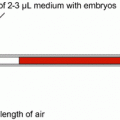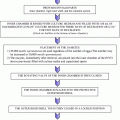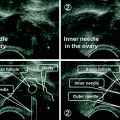Study
Year
Method
Patients (n)
Age (years)
Cycles (n)
FR (%)
PR/ET (%)
Kedem et al. [8]
2014
Modified NC-IVF/ICSI in POR
111
39
111
0.67
0.9
Von Wolff et al. [21]
2014
NC-IVF
112
35.2
108
45.4
27.9
Von Wolff et al. [21]
2014
NC-IVF + Clomiphene
112
35.2
103
57.3
25.0
Bodri et al. [32]
2014
NC-IVF/ICSI + NSAID
365
40.3
1183
57.0
35.0
Roesner et al. [6]
2014
NC-IVF/ICSI
159
36.4
463
59.4
10.9
Rijken-Zijlstra et al. [20]
2013
Minimal stimulation-IVF + GnRH Antagonist + NSAID
60
30.9
250
67.1
Ongoing PR/Cycle 5.6
Rijken-Zijlstra et al. [20]
2013
Minimal stimulation-IVF + GnRH Antagonist
60
31.8
60
274
Ongoing PR/Cycle 8.4
Son et al. [29]
2013
NC-ICSI/IVM
28
33.3
28
73.4
20.8
Polyzos et al. [7]
2012
NC-IVF in POR
136
37.3
390
n.a.
LBR 7.4
Kawachiya et al. 19]
2012
NC-IVF/ICSI
n.a.
36.5
903
44.5
35.9
Kawachiya et al. [19]
2012
NC-IVF/ICSI + NSAID
n.a.
36.2
962
55.3
39.1
Kato et al. [26]
2012
Minimal NC-IVF
7244
39.4
20,244
77.0 IVF 83.2 ICSI
21.8
Gordon et al. [5]
2011
NC-IVF
n.a.
n.a.
795
n.a.
26.1
Papolu et al. [24]
2011
Mild stimulation IVF
150
n.a.
n.a.
n.a.
56.0
Lou and Huang [23]
2010
Modified NC-IVF
30
30.6
30
62.7
PR/Cycle 30.0
Xu et al. [28]
2010
NC-ICSI/IVM
323
31.5
364
86.3
35.9
Aanesen et al. [22]
2010
Modified NC-IVF
43
34.2
129
n.a.
26.7
Aanesen et al. [22]
2010
Mild NC-IVF
145
32.8
250
n.a.
27.2
Kim et al. [11]
2009
Minimal stimulation-IVF/ICSI in POR
90
n.a.
90
n.a.
LBR 13.5
Schimberni et al. [12]
2009
NC-ICSI
294
39.3
500
57.0
17.1
Lim et al. [27]
2009
NC-ICSI/IVM
140
31.4
153
81.9
40.4
Natural Cycle IVF
Many patients are asking for a “natural” IVF approach without any hormonal stimulation because of “fear of hormones”, ethical or religious reasons or a history of hormone-dependent cancer in their own or family history [2]. A natural cycle IVF is emphasized to be more cost- and time-effective for the patients [3, 4]. Thus and for the scientific assumption that the unstimulated, in vivo maturated oocyte has a better competence for development, many IVF units established natural cycle IVF again.
However, difficulties such as premature LH-surge and ovulation, failure of retrieve an oocyte, and therefore lesser success rates still limit the use of natural cycle IVF. Gordon et al. [5] evaluated the SART Clinical Outcome Reporting System (CORS) database in the USA and found that unstimulated IVF cycles represent less than 1% of all IVF cycles. They could show that natural cycle IVF leads to significantly higher implantation rates in some age groups (35–37 years and 38–40 years) when compared to conventional IVF cycles (40.4% vs. 23.8% and 28.4% vs. 15.4%). In the authors’ opinion, this may support the hypothesis that the endometrial receptivity is enhanced in natural cycles. A pregnancy rate of 35.9% in patients <35 years and live birth rate of 19.9% for all patients could be achieved. In conclusion, the authors would recommend natural cycle IVF especially to patients with good preconditions (e.g. <35 years, no poor ovarian response (POR)).
Another retrospective study by Roesner et al. [6] evaluated 463 cycles of natural cycle IVF and came to similar results. Because patients undergoing natural cycle IVF present often unfavourable preconditions (long duration of infertility, age >40 years, known history of low response in former conventional stimulated cycles), pregnancy rates still remain low. Further studies to optimize treatment strategies and to define patient groups suitable for natural cycle IVF were recommended.
Low Responders
In patients who are known to have a low ovarian reserve or who showed a low response in a former controlled ovarian hyperstimulation cycle, many teams prefer a natural cycle IVF instead of another controlled ovarian hyperstimulation attempt. The following studies focus on poor responder patients.
Only two studies [7, 8] followed the Bologna criteria of POR (at least two of the following): (1) advanced maternal age (≥40 years) or any other risk factor for POR, (2) a previous POR (≤3 oocytes with a conventional stimulation protocol) and (3) an abnormal ovarian reserve test [9]. Polyzos et al. [7] found a significant lower embryo transfer rate as well as live birth rate in the study group of low responders compared with the control group with normal responders. Acknowledging the limitations of their study—a retrospective design and a significant younger control group—they conclude that older patients with POR may be candidates for alternative therapies, e.g. such as oocyte donation programs.
Kedem et al. [8] support this thesis in their retrospective study with patients also fulfilling the Bologna criteria and undergoing a modified natural cycle with GnRH antagonist and human menopausal gonadotropin (hMG) stimulation after an IVF attempt with controlled ovarian hyperstimulation and poor response. The GnRH antagonist was started when the leading follicle had a diameter of 13 mm and two to three ampules of hMG were injected daily. Because of very poor pregnancy rates in this patient group, they conclude that genuine poor responders with a yield of only one oocyte in a previous conventional cycle did not benefit from a natural cycle program and should therefore not be offered a mild stimulation natural cycle IVF. The option of a controlled ovarian stimulation, egg donation or adoption should be discussed with these patients.
In contrast, Kadoch et al. [10] stated in a retrospective study that a modified natural cycle IVF with GnRH antagonists starting at a follicle diameter of 15 mm, mild human menopausal gonadotropin stimulation (150 IU/d) and 50 mg indomethacin three times a day to avoid a premature ovulation should be the first choice in young poor responders because it is a cheap and monthly repeatable option. They mentioned that a single oocyte of better quality as a consequence of natural selection and a better endometrial receptivity resulting in natural cycle IVF balances the low chance for an embryo transfer in these attempts.
In a prospective assessment, Kim et al. [11] reported a similar pregnancy rate and live birth rate in a minimal stimulation natural cycle IVF with FSH and GnRH antagonist compared with a conventional antagonist protocol in low responder patients. The GnRH antagonist was administered when the leading follicle reached 13–14 mm together with 150 IU/d FSH. The ovulation was triggered at a follicle diameter of 17–18 mm and the retrieval was performed 34–35 h later. Natural cycle IVF with minimal stimulation is considered to be a last chance for women who have failed to respond adequately to a conventional hyperstimulation IVF cycle before oocyte donation.
Another retrospective study by Schimberni et al. [12] reported about 500 consecutive cycles of natural cycle intracytoplasmic sperm injection (ICSI) in poor responders without any hormonal intervention. Similar rates of retrieved oocytes, embryo transfers and pregnancies per consecutive cycle but significantly different pregnancy rates in younger patients when analysing the date depending on the patients age were found (≤35 years PR = 29.2% vs. 36–39 years PR = 20.6%, vs. ≥40 years PR = 10.5%). In conclusion, natural cycle ICSI up to four attempts in younger patients (≤40 years) was considered as a possible chance for patients with a low ovarian reserve.
Besides these studies, successful natural cycle IVF was also reported in case reports. Hyman et al. [13] described the live birth of twins after a modified natural cycle ICSI in a woman with decreased ovarian reserve. Despite of elevated FSH levels the patient present with regular monthly menstruation. After two IVF cycles with high dose controlled ovarian stimulation and poor response, it was decided to perform a natural cycle ICSI with early hCG administration. From three antral follicles with a maximal diameter of 12 mm at retrieval, three mature oocytes were collected. Two were fertilized, and a twin pregnancy was achieved.
Another team reported a successful pregnancy after a “double rescue” retrieval in a patient with low ovarian reserve following a natural cycle IVF [14]. The patient felt that she might have surged the previous evening when she attended the IVF unit. Because there was a leading follicle with good perifollicular blood flow as well as a triple-layer endometrium in the ultrasound present the decision for retrieval on the same day was made. No oocyte was identified. With the patients’ consent, a second attempt after hCG injection for the following day was scheduled. A control on the next day showed a regular follicle with good ultrasound criteria (very good peri-follicular blood flow), so a further retrieval was attempted. At that time, a metaphase I oocyte was found which was matured after a few hours in in vitro maturation (IVM) medium. Fertilization could be achieved, and a pregnancy was induced.
Li et al. [15] described a series of three women with poor response in a former controlled ovarian stimulation cycle who got pregnant after a natural cycle IVF combined with IVM. In all three cases, immature and mature oocytes were collected. The immature oocytes were matured in IVM medium and fertilized by ICSI and transferred with the resulting embryos resulted after the fertilization of the mature oocytes.
In the last case, a pregnancy after modified natural cycle with GnRH antagonist started at a follicle diameter of 15 mm and 75 IU/d hMG began the same day in a poor follicular responding young (<35 years) patient with elevated FSH levels is reported [16].
All authors of the described case reports conclude that their attempt in a natural cycle IVF in low responders combined with new approaches such as early hCG administration, double retrieval, IVM or modified stimulation may be additional alternatives for poor responders as a last chance before, e.g. oocyte donation.
Stay updated, free articles. Join our Telegram channel

Full access? Get Clinical Tree






